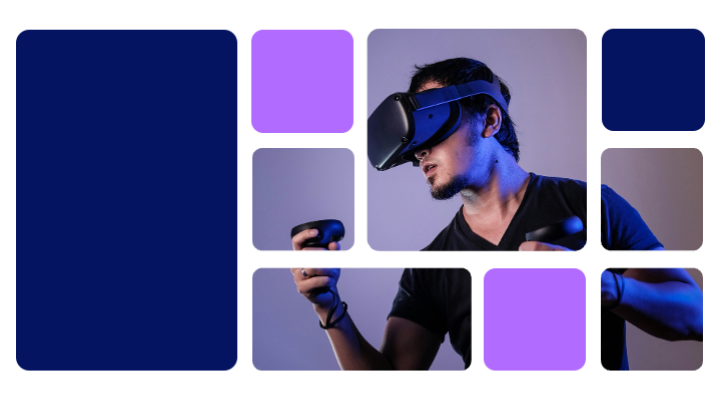By 2030, a people-first approach to advertising and media will be further and more fully engrained, with marketing shifting away from product-focused messaging and channel-centric planning to prioritise building meaningful relationships with consumers. Understanding the needs and interests of the audience and delivering value through the platforms, channels and content they engage will become more crucial. Over the next five years, consumers’ focus will expand beyond a few dominant platforms to include richer, more immersive experiences across multiple touchpoints. As a result of this shift, micro-communities will flourish as consumers demand more personalised experiences with deeper connections.
Social media will evolve & diversify
While social media will remain a dominant force, it will evolve and diversify with advancements in technology changing audience behaviour and usage across generations. For example, platforms will leverage AI to deliver ultra-tailored content - catering to individual preferences, habits and emotions in real time - which stands to appeal to Gen Z in particular, who crave authentic and personalised content. Platforms like Meta are already developing virtual spaces where users interact through avatars in fully immersive environments. By 2030, these could dominate social media, appealing to cohorts who are moving to more community focused interactions.
When it comes to ad spend, IAB UK's Futurescape Barometer indicates continued growth within the social media market, with spend standing at more than £13 billion by 2030, driven by social video spend. For more from the IAB UK Futurescape Barometer, log in to download the graphs.
The demand for meaningful interactions
The rise of micro-communities is a key trend that will continue to accelerate. These smaller, purpose-driven spaces provide users with a sense of belonging and deeper engagement around shared interests or values - something that larger, more generalised platforms can struggle to offer. As consumers demand more personalised and authentic interactions, micro-communities will grow in importance - enabling brands to build more meaningful connections with specific audience segments. Platforms like Peanut (which connects women for support) or Wattpad (for writers) exemplify this trend, driving more audience fragmentation as we head towards 2030.
How to future-proof for 2030
-
Take a platform specific approach. Simply repurposing existing ads for use across social platforms is no longer enough; content needs to be tailored to fit the unique nature of the platform and its audience
-
Create more immersive spaces. Media owners should leverage data and emerging technology to create more immersive, community-driven environments where consumers can engage in a way that feels tailored and unique
-
Champion cross-platform collaboration. By working together, media owners (broadcasters, publishers, content creators) and advertisers can utilise the diverse audiences across different platforms, and create more comprehensive and engaging campaigns that reach consumers where they spend their time
-
Capitalise on review-led purchasing. Advertisers should tap into the cross-generational appeal of social and review-driven purchasing decisions. Consumers across all age groups increasingly turn to social media for product recommendations and reviews, providing a valuable opportunity for brands and products to stand out
-
Lead with authentic video content. Advertisers should prioritise social-first video content that resonates with audiences while leveraging AI and technology for optimisation. At the same time, it's crucial to maintain brand uniqueness to avoid blending into a sea of sameness. This approach will help brands stand out and forge stronger connections with consumers in a landscape that increasingly values transparency and authenticity
Download full chapter

In-depth research slides
Explore the story behind the trends with detailed slides from this chapter
Learn more
Quick-read summary
Access a downloadable version of the content on this page for a round-up of the key insights
Learn more
Media landscape infographic
Capture the main takeouts from this section, ideal for sharing or coming back to later
Learn more